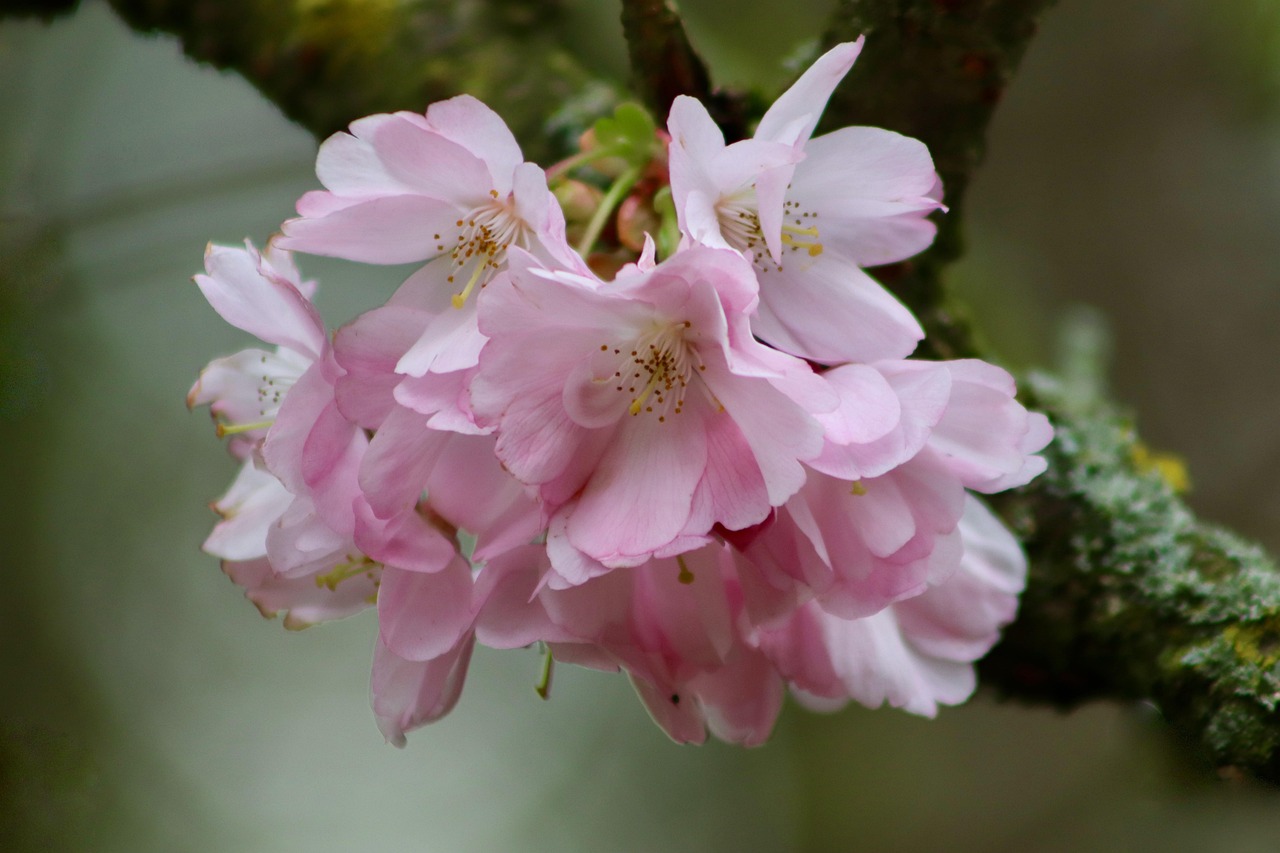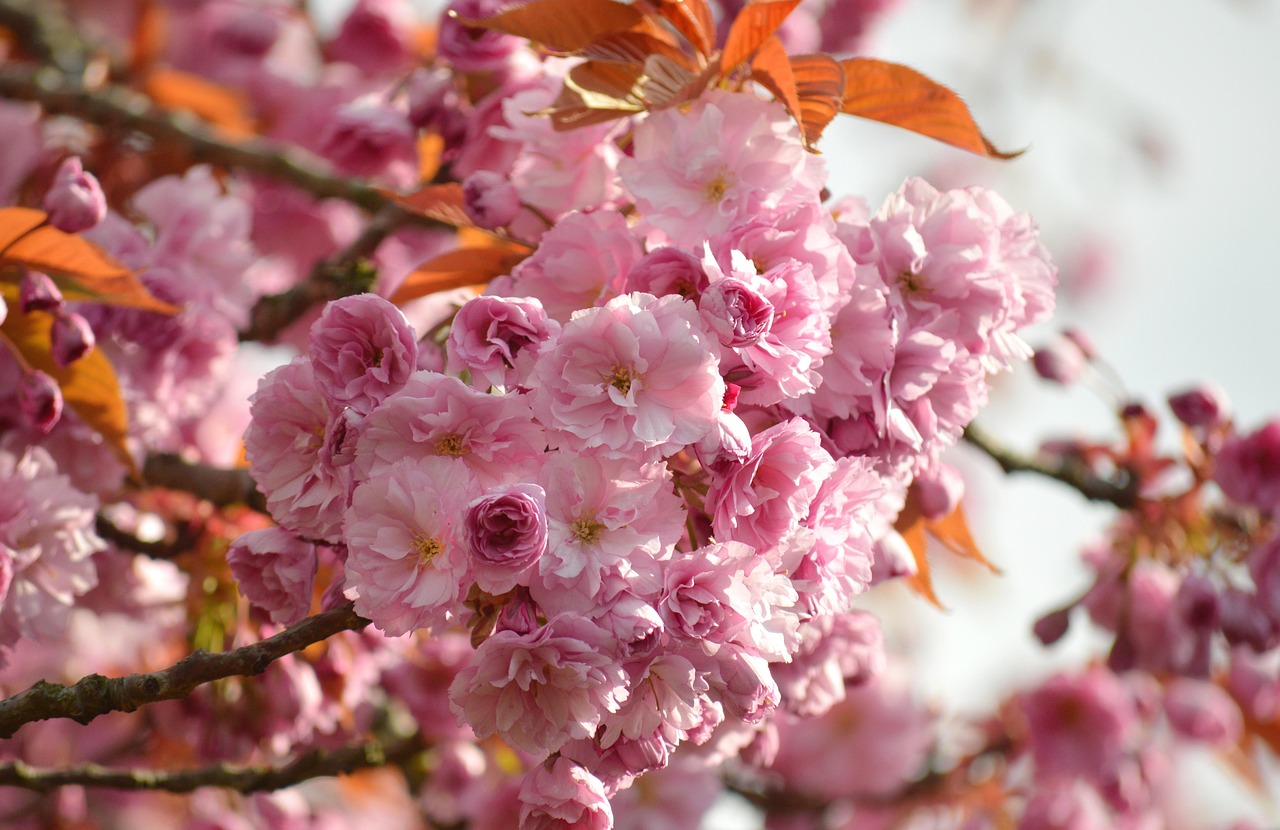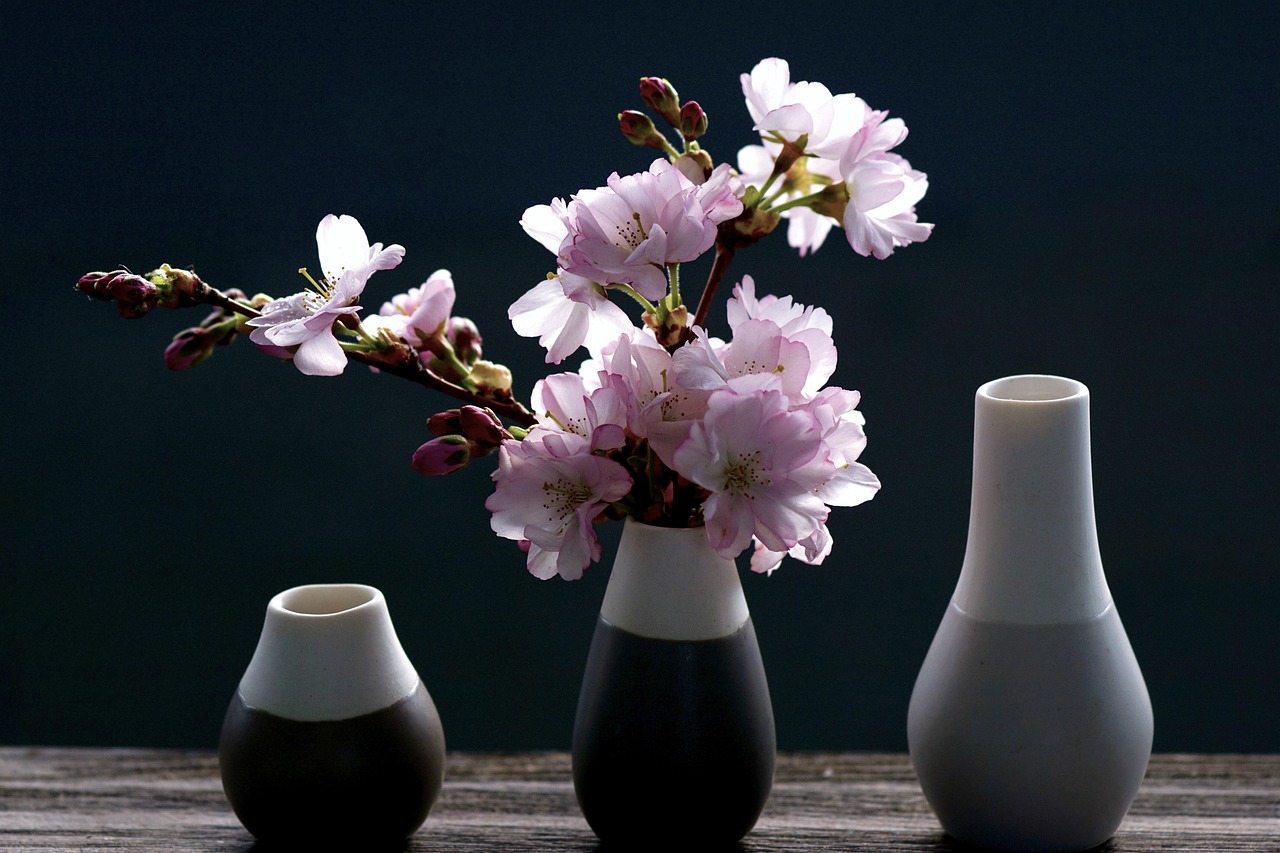Proper pruning and maintenance are vital for enhancing cherry blossom blooms during festivals and celebrations. Following expert techniques ensures healthy growth, vibrant flowers, and beautiful tree shapes. Timely care, community involvement, and pest management help preserve these iconic trees, making every cultural event memorable with stunning cherry blossoms.
Cherry blossoms, known for their breathtaking beauty, are a significant cultural symbol in many countries. In Japan, these trees are celebrated during Hanami, a traditional event where people gather to appreciate the fleeting beauty of the cherry flowers. Similar events are observed in various cultures around the world, making the care and maintenance of cherry blossom trees crucial for these occasions.

Pruning cherry blossom trees not only promotes better flowering but also maintains the tree’s overall health. With the right techniques, gardeners can shape the trees to enhance their beauty during peak bloom. The timing of pruning is vital, as it varies depending on the specific species of cherry tree and local climate conditions.
Importance of Pruning Cherry Blossom Trees
Pruning serves multiple purposes when it comes to cherry blossom trees. Here are some key reasons why regular pruning is essential:
- Improves Air Circulation: Proper pruning allows for better air circulation within the canopy. This helps reduce the risk of fungal diseases that can affect the blossoms.
- Enhances Light Penetration: Thinning out branches ensures that sunlight reaches all parts of the tree, promoting even growth and more abundant flowers.
- Shapes the Tree: Pruning helps maintain a desirable shape, making the tree more visually appealing during cultural events.
- Encourages New Growth: Removing old or weak branches stimulates new growth, leading to more vibrant blossoms in the following season.
The timing of cherry blossom pruning is crucial for achieving optimal results. For most cherry varieties, late winter or early spring is considered the best time to prune. This period allows gardeners to remove dead or damaged branches before new growth begins. However, it is important to avoid pruning during the blooming period, as this can adversely affect flower production.

Pro-Tips and Common Mistakes to Avoid
When I first started pruning cherry blossom trees, I learned a few lessons the hard way. Here are some tips from my experience to help you avoid common pitfalls and ensure your trees flourish for every celebration:
- Don’t Rush the Pruning: I used to think trimming quickly was best, but I realized that making careful, deliberate cuts with sharp tools prevents unnecessary damage. Always take your time to assess which branches need removal.
- Avoid Over-Pruning: At first, I removed too many branches, thinking it would promote better flowering. I learned that removing more than one-third of the tree’s canopy can stress the tree and reduce blooms. Less is more!
- Make Clean, Proper Cuts: I used dull tools initially, which tore the branches and delayed healing. Using sharp, sanitized tools makes clean cuts just above a bud, encouraging healthy new growth.
- Prune at the Right Time: I used to prune during the blooming period, which negatively impacted flowers. I now do my pruning in late winter or early spring before buds swell—this timing fosters better blossoms.
- Watch for Disease Signs: I ignored early signs of disease, but I found that quick removal of infected branches and tool sanitation prevents spread and keeps my trees healthy.
- Don’t Forget Soil and Fertilization: Proper soil health plays a huge role. I learned to conduct soil tests and apply balanced, slow-release fertilizers to support vigorous flowering and overall health.
- Stay Vigilant for Pests: Pests can sneak in after pruning. Regular inspections and early treatment prevent infestations from ruining your trees right before festivals.
- Learn Before You Cut: I initially pruned without proper knowledge and damaged the trees. Now, I educate myself on techniques like thinning and heading to avoid uneven growth or under-coverage.
Remember, caring for cherry blossom trees is an ongoing process. With patience, proper timing, and attention, you can enjoy stunning blooms year after year for all your cultural celebrations!
Best Practices for Pruning Cherry Blossoms
Implementing proper pruning techniques can significantly impact the health and beauty of cherry blossom trees. Here are some best practices to follow:
- Assess the Tree: Before starting, take a moment to observe the tree’s overall structure. Identify dead or diseased branches that need removal.
- Use Clean Tools: Ensure that pruning tools are clean and sharp. This prevents the spread of diseases and makes clean cuts that heal quickly.
- Make Smart Cuts: Cut branches at a 45-degree angle just above a bud. This encourages new growth and minimizes damage to the tree.
- Avoid Over-Pruning: Too much pruning can harm the tree. Aim to remove no more than one-third of the tree’s total mass in a single season.
After pruning, it’s essential to monitor the tree’s progress. This includes checking for new growth and any signs of disease or stress. Observing how the tree responds to pruning can help refine techniques for future seasons.
Common Challenges in Cherry Blossom Pruning
While pruning is beneficial, it can also present challenges. Some common issues include:

- Pest Infestation: After pruning, trees can be more vulnerable to pests. Regular inspections help identify and address any infestations early.
- Disease Spread: If tools are not properly sanitized, there is a risk of spreading diseases from one branch to another.
- Inconsistent Growth: Improper pruning can lead to uneven growth patterns, resulting in an unbalanced appearance.
To mitigate these challenges, it’s helpful to stay informed about common pests and diseases associated with cherry blossoms. Knowledge about local conditions can also aid in timely interventions if issues arise.
Cultural events surrounding cherry blossoms often involve large gatherings and celebrations. Ensuring that these trees are well-pruned and healthy contributes significantly to the overall experience of attendees. Beautifully blooming cherry blossoms create an enchanting atmosphere that enhances festivities.
As communities celebrate the arrival of spring, well-maintained cherry trees serve as a focal point for joy and connection among people. Through careful pruning and attention to detail, these stunning trees can thrive and bring beauty to cultural events year after year.

Techniques for Effective Cherry Blossom Pruning
To achieve optimum results, employing effective pruning techniques is essential. Different approaches can be applied depending on the situation and the specific goals for the cherry blossom trees. Here are some widely recommended techniques:
Thinning
Thinning is a technique that involves selectively removing branches to improve light penetration and air circulation. This method is particularly useful for older trees that may have dense canopies.
- Benefits of Thinning:
- Enhances sunlight exposure, leading to better flowering.
- Reduces the likelihood of fungal diseases by improving air flow.
- Helps maintain a manageable size for the tree.
Heading
Heading involves cutting back the tips of branches to promote bushier growth. This technique can be particularly effective for younger trees that need to develop a stronger structure.
- Benefits of Heading:
- Encourages lateral branching, creating a fuller appearance.
- Allows for better control over the height of the tree.
- Stimulates new growth, potentially increasing flower production.
Renewal Pruning
This method focuses on removing older, less productive branches to encourage new growth. Renewal pruning is often performed on older trees that may be struggling with reduced flowering.
- Benefits of Renewal Pruning:
- Revitalizes the tree by promoting new shoots.
- Improves overall health and vigor of the tree.
- Increases flowering potential in subsequent seasons.
The Role of Soil and Fertilization
A healthy soil environment is crucial for the success of cherry blossom trees. Proper fertilization can enhance the effectiveness of pruning efforts and overall tree health. Here are key aspects to consider:
Soil Quality
Cherry blossoms thrive in well-drained, loamy soil. Conducting a soil test can provide insight into nutrient levels and pH balance.
- Key Elements for Healthy Soil:
- Good drainage to prevent root rot.
- A balanced pH level, ideally between 6.0 and 7.0.
- Nutrients such as nitrogen, phosphorus, and potassium for growth.
Fertilization Schedule
A strategic fertilization schedule can support robust growth and flowering. The following timeline is generally recommended:
- Early Spring: Apply a balanced fertilizer as buds begin to swell.
- Post-Bloom: A second application can help replenish nutrients after flowering.
- Late Summer: A slow-release fertilizer can support late-season growth.
Pest and Disease Management
Maintaining cherry blossom trees requires vigilance against pests and diseases. Various challenges can threaten their health, impacting their beauty during cultural events.
Common Pests
Pests can significantly affect the health of cherry blossom trees. Some common pests include:
- Aphids: Small insects that suck sap from leaves, leading to yellowing and wilting.
- Spider Mites: Tiny pests that create fine webs and cause leaf discoloration.
- Cherry Fruit Fly: Larvae can damage fruit, impacting overall tree vitality.
Disease Prevention
Several diseases can plague cherry blossom trees. Implementing preventative measures is essential:
- Crown Gall: Caused by bacteria, it results in tumor-like growths on roots and stems. Remove infected sections immediately.
- Powdery Mildew: A fungal infection that appears as white powder on leaves. Ensure good air circulation and avoid overhead watering to minimize this issue.
- Brown Rot: Affects blossoms and fruit, leading to decay. Regularly remove infected fruits and prune affected branches.
Regular monitoring for signs of pests and diseases is crucial for maintaining tree health. Early intervention can prevent more significant issues down the line, ensuring that the trees remain vibrant for cultural celebrations.
Cultural Significance and Community Engagement
The beauty of cherry blossoms extends beyond their physical presence; they are deeply embedded in cultural traditions. Events celebrating these trees foster community engagement and connection among individuals.
Cultural festivals often include activities such as picnics, performances, and art displays under the blooming trees. These gatherings allow people to appreciate nature while fostering relationships within their communities.
The involvement of local organizations in organizing these events enhances their success. Collaborations can include schools, businesses, and cultural groups, all working towards a common goal of celebrating nature’s beauty.
Additionally, educational programs related to cherry blossom care can empower community members with knowledge about proper pruning techniques and tree maintenance. This not only improves the health of local trees but also instills a sense of stewardship among residents.
Celebration of Cherry Blossoms Worldwide
The cultural significance of cherry blossoms extends beyond their beauty. They are celebrated in various countries, each with unique traditions and meanings. Understanding these global festivities can enhance appreciation for the trees and their role in community gatherings.
Japan: Hanami
In Japan, cherry blossoms are synonymous with the annual Hanami festival. This tradition dates back over a thousand years and is a time for family and friends to gather under blooming sakura trees.
- Hanami Activities:
- Picnicking beneath the trees with seasonal foods.
- Enjoying traditional performances such as music and dance.
- Participating in local events that include art exhibitions and cultural workshops.
During Hanami, people often take part in evening celebrations known as “yozakura,” where the cherry blossoms are illuminated. This creates a magical atmosphere, drawing large crowds who appreciate the beauty of the blossoms at night.
South Korea: Cherry Blossom Festivals
South Korea also hosts numerous cherry blossom festivals, attracting both locals and tourists. The festivals usually occur in early April, coinciding with the peak bloom of cherry trees.
- Popular Festivals Include:
- Jinhae Gunhangje Festival: One of the largest cherry blossom festivals in South Korea, featuring parades and fireworks.
- Yeouido Spring Flower Festival: Held on Yeouido Island, this event showcases thousands of cherry trees along the Han River.
- Bukchon Hanok Village Festival: Combines traditional Korean culture with cherry blossom viewing, offering visitors a glimpse into historical architecture.
United States: National Cherry Blossom Festival
The National Cherry Blossom Festival in Washington, D.C., celebrates the gift of cherry trees from Japan in 1912. This event has grown into a major celebration of spring, lasting for several weeks.
- Festival Highlights:
- Parade featuring floats, performances, and cultural displays.
- Cherry Blossom 10-mile Run, promoting health and fitness.
- Art exhibitions showcasing local artists inspired by the blossoms.
This festival not only celebrates cherry blossoms but also symbolizes friendship between Japan and the United States. Visitors come from around the world to participate in this vibrant event, enhancing cultural exchange.
The Ecological Impact of Cherry Blossom Trees
Aside from their aesthetic and cultural significance, cherry blossom trees play an important ecological role. Understanding their impact on local ecosystems can enhance community appreciation for these trees.
Biodiversity Support
Cherry blossom trees provide essential habitats for various species. They attract numerous pollinators such as bees and butterflies, which contribute to the overall health of local flora.
- Benefits to Ecosystem:
- Encourages pollination of other nearby plants and crops.
- Serves as a food source for birds and insects.
- Enhances soil quality through leaf litter decomposition.
Urban Environments
In urban areas, cherry blossom trees contribute to improved air quality and reduce heat island effects. Their presence can make cities more livable and aesthetically pleasing.
- Positive Effects on Urban Life:
- Provide shade during hot months, reducing energy consumption for cooling.
- Create green spaces that promote mental well-being and social interaction.
- Enhance property values by improving neighborhood aesthetics.
Community Involvement in Cherry Blossom Care
Caring for cherry blossom trees requires community involvement. Engaging local residents in tree maintenance fosters a sense of ownership and responsibility toward these natural treasures.
Volunteer Programs
Many communities organize volunteer programs focused on pruning and maintaining cherry blossom trees. These initiatives often include educational workshops that teach proper techniques and tree care practices.
- Common Volunteer Activities:
- Seasonal pruning sessions to prepare trees for blooming.
- Tree planting events to expand local cherry blossom populations.
- Educational outreach programs to raise awareness about the importance of tree care.
Partnerships with Local Organizations
Collaboration with schools, environmental groups, and local governments can amplify efforts to maintain cherry blossoms. These partnerships can lead to successful initiatives that benefit both the trees and the community.
- Benefits of Partnerships:
- Pools resources for tree care and maintenance efforts.
- Increases public awareness through community events and workshops.
- Promotes sustainability practices within the community.
Through community involvement, residents can play an active role in preserving the beauty of cherry blossoms while fostering connections among neighbors. This engagement not only benefits the trees but also strengthens community bonds during cultural celebrations.
Challenges in Maintaining Cherry Blossom Trees
While cherry blossom trees are celebrated for their beauty and cultural significance, maintaining their health can present challenges. Understanding these challenges is crucial for effective care and successful blooming during cultural events.
Environmental Factors
Environmental conditions can significantly impact the health of cherry blossom trees. Factors such as extreme weather, soil quality, and urban pollution can influence tree growth and flowering.
- Extreme Weather Conditions:
- Late frosts can damage buds and reduce flowering.
- Heavy rain or wind can cause branches to break or flowers to fall prematurely.
- Drought conditions can stress trees, making them more susceptible to disease.
- Soil Quality Issues:
- Poor drainage can lead to root rot and other issues.
- Lack of nutrients may hinder healthy growth and flowering.
Pest and Disease Management
As previously mentioned, pests and diseases pose ongoing challenges for cherry blossom care. Proactive measures, including regular monitoring and timely interventions, can help mitigate these risks.
- Integrated Pest Management (IPM):
- Utilizing a combination of biological, cultural, and chemical methods to manage pest populations effectively.
- Encouraging natural predators, such as ladybugs, can help control aphid populations naturally.
- Disease Monitoring:
- Regular inspections for signs of diseases like powdery mildew or brown rot.
- Implementing proper sanitation practices to prevent disease spread.
Future Trends in Cherry Blossom Care
As urban landscapes continue to evolve, the future of cherry blossom care will likely incorporate innovative practices. Embracing technology and sustainable practices will be essential for maintaining these iconic trees in the years to come.
Use of Technology
The integration of technology in tree care can enhance monitoring and maintenance efforts. Some future trends may include:
- Smart Sensors: Devices that monitor soil moisture, temperature, and light levels can provide valuable data for optimal tree care.
- Drones: Drones equipped with cameras can help survey large areas of cherry blossom trees quickly, identifying health issues early.
Sustainable Practices
Emphasizing sustainability in tree care will benefit both cherry blossoms and the environment. Future initiatives may include:
- Native Plant Integration: Planting native species alongside cherry blossoms can support local ecosystems and attract beneficial wildlife.
- Organic Fertilization: Using organic fertilizers and pest control methods can reduce chemical runoff and promote healthier soil.
Final Thoughts
The maintenance and celebration of cherry blossom trees play a vital role in enhancing community spirit and cultural identity. Proper pruning techniques, proactive pest management, and community involvement are essential for ensuring these beautiful trees thrive.
Cultural events centered around cherry blossoms not only provide an opportunity to appreciate nature but also strengthen social bonds among residents. As cherry blossoms bloom each spring, they serve as a reminder of the beauty of life, renewal, and the importance of nurturing our environment.
Through the combined efforts of individuals, organizations, and municipalities, we can ensure that cherry blossoms continue to flourish for generations to come. By embracing both traditional practices and modern innovations, communities can celebrate these stunning trees while promoting ecological health and cultural heritage.
Ultimately, the joy brought by cherry blossoms during cultural celebrations reflects a collective appreciation for nature’s beauty. As we look toward the future, continued dedication to their care will ensure that these iconic trees remain a symbol of hope and renewal in our communities.
